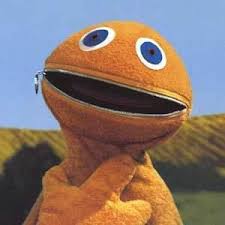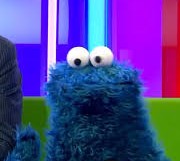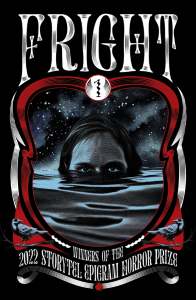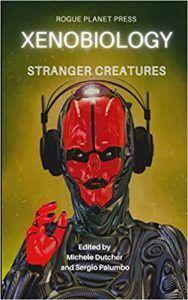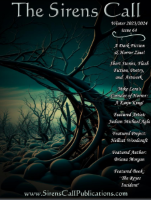
© The Sirens Call Publications
“Well, 2024 was an excellent year!” No future historians will say, ever. Come to think of it, because of events in 2024, there might not be any future historians. Not any future, full-stop.
However, on a personal level, 2024 saw some improvements in my situation. Firstly, in March, my partner and I, and our cat, moved apartments in our current city (and country) of abode, Singapore. We’d been in an expensive condo, inhabited mostly by rich Western and Chinese expatriates, in a modern part of the city-state. We moved into a cheaper and more modest condo in an older and more traditional district where our neighbours are nearly all Singaporean. It’s so much nicer. For one thing there are no spoilt, bratty kids running riot outside our front door because the unfortunate Filippino / Indonesian / Burmese girls hired by their expat parents as ‘maids’ or ‘helpers’ and made to look after them are afraid or unwilling to discipline them. Also, our new neighbourhood is handier for getting to our work and has several notable Hawkers’ Centres and eateries offering a range of good but modestly-priced foods. Singapore is generally expensive and its Hawkers’ Centres are one of its saving graces.
Secondly, I had a successful year with regard to my writing. Indeed, in terms of short stories published, 2024 even topped 2023, when 15 of my stories made it into my print. This has been my best writing year to date.
So, here’s a round-up of my stories published in 2024. Details are provided about who published them, what pseudonym they were published under and, when possible, how they can be accessed today.
As Jim Mountfield:
- Jim Mountfield, the pseudonym I stick on my horror fiction, was first published in 2024 at the end of January when the story Underneath the Arches was included in the quarterly fiction-and-poetry magazine The Sirens Call. Heavily inspired by Edgar Allan Poe, Underneath the Arches was written by me at a young age – and I think it shows in the florid writing style. However, I was grateful to The Sirens Call for giving the story (which’d languished on my computer hard-drive for decades) a home at last. Alas, The Sirens Call ceased publication late in the year and I can no longer provide a link for downloading its past issues.
- In April, Issue 11 of The Stygian Lepus featured my ‘cosmic-horror’ story The Followers, which was set in the English city I lived in from 2002 to 2005, Newcastle-upon-Tyne. Specifically, it was set in two parts of it, Grainger Market and Chinatown on Stowell Street. Issue 11 can be read here if you become a member of The Stygian Lepus’s Back Catalogue; or purchased here.

© The Stygian Lepus
- April was also when my Northern-Ireland-set short story The Crawler, which involved a devious policeman and a collection of sinister dolls, appeared in 2024’s second issue of The Sirens Call.
- And in July the next – and unfortunately, the last ever – issue of The Sirens Call contained my sci-fi / horror story The Colony. This was set in East Anglia after manmade climate change has hoicked up temperatures and sea levels. Its premise was that scientists had created, through genetic engineering, millions of giant jellyfish-like organisms and tethered them offshore in order to hold back storm surges and reduce coastal erosion. Obviously, nothing could go wrong with this scheme. Nothing at all…
- The Hole in the Wall was a ‘folk-horror’ story about a member of an organisation modelled on Britain’s Campaign for Real Ale (CAMRA) who’s researching a couple of pubs. First, he visits a horrible dump of a pub; then he stumbles across a pub that’s so classy it seems too good to be true. And yes, the second one is too good to be true because it has a mysterious, malevolent something lurking in its walls. The Hole in the Wall appeared in Volume 18, Issue 12 – the October 2024 edition – of Schlock! Webzine, which can be purchased here.
- Also in October, my story The Activation was the opening number in the anthology Nightmare Fuel: Body Horror 2024, the annual volume of scary fiction published by Cloaked Press. As the collection’s title suggests, its theme this year was body horror, described by Wikipedia as “a subgenre of horror fiction that intentionally showcases grotesque or psychologically disturbing violations of the human body or of another creature…” including “aberrant sex, mutations, mutilation, zombification, gratuitous violence, disease, or unnatural movements of the body.” The Activation contained about five of those things, so I think it fitted the bill. It was also a prequel to my story The Nuclei, which appeared in the 2020 collection Xenobiology – Stranger Creatures. Nightmare Fuel: Body Horror 2024 can be purchased on Kindle here and as a paperback here.
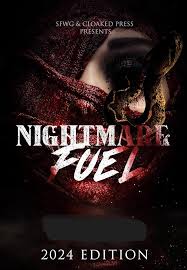
© Cloaked Press
- In November, a Jim Mountfield story appeared in the collection Monster: Underdog Anthology 2024 from Leg Iron Books. A monster of a book indeed, this featured 39 spooky stories, including my Halloween-set effort Bag of Tricks. The story was inspired by a memory I had of riding on Bangkok’s Skytrain one October 31st when some Thai kids entered the carriage wearing fancy dress, presumably on their way to a Halloween party; but most of Bag of Tricks actually takes place in Scotland. Monster: Underdog Anthology 2024 can be bought on Kindle here and as a paperback here.
- The Tears of the Pontianak, which appeared in the Samhain 2024 edition of the magazine The Hungur Chronicles, published in November too, was a first for me. This was my first published story where the setting is my current home, Singapore. As you can tell from the title, it’s mainly about a Pontianak, a blood-drinking demon of Malaysian, Singaporean and Indonesian folklore. But the idea for the story actually came to me one afternoon when I was exploring Singapore’s Asian Civilisations Museum and encountered some beautiful pieces of local, antique furniture. The Hungur Chronicles’ Samhain 2024 issue can be purchased directly from Hiraeth Publishing here or from Barnes & Noble here.
- Coming from a farming background, quite a few of my stories are set on farms. However, I only had one ‘farm-horror’ story published in 2024. This was in Issue 19 – the December 2024 edition – of The Stygian Lepus and its title was Rack and Ruin. It owed something to the legendary American horror writer H.P. Lovecraft, although the Lovecraftian elements were mixed with the mud, muck and rain of a hill farm in autumnal southern Scotland. Again, Issue 19 can be read here if you’re a member of The Stygian Lepus’s Back Catalogue; or simply bought here.
- The influence of H.P. Lovecraft could also be seen in The House of Glass, the final Jim Mountfield story I had published in 2024. As its title implies, most of the action takes place inside a house made almost entirely of glass. The house stands in the mountains of Sri Lanka, the country where I lived in real life from 2014 to 2022. The House of Glass appears in the anthology Swan Song: The Final Anthology, which, sadly, is the last volume to come from Trevor Denyer’s Midnight Street Press – from now on, Midnight Street Press will exist only to sell what’s on its back catalogue, not to produce anything new. It can be purchased from Amazon UK here and from Amazon US here.

© Swords and Sorcery Magazine
As Rab Foster:
- Rab Foster, the pseudonym I use when writing fantasy fiction – usually the unruly sub-genre of fantasy called ‘sword and sorcery’ – hit the ground running in 2024. On January 1st, the second and final part of my story The Boots of the Cat appeared in Volume 18 Issue 3 of Schlock! Webzine. This was about a group of mercenaries who, while sequestered in an unwelcoming city, find themselves in a strange scenario inspired by a famous fairy tale. And no, despite the title, that fairy tale isn’t Puss in Boots. The issue can be purchased here.
- Because of a publishing delay, the December 2023 edition of the fiction magazine Savage Realms Monthly didn’t appear until January 2024. It contained my story Pit of the Orybadak, which combined fantasy elements – slimy flesh-eating monsters slithering around in a giant bog – with the pertinent real-life theme of how soldiers are treated (or mistreated) when they become prisoners of war. This issue of Savage Realms Monthly can be bought here.
- The Fleet of Lamvula, a heady story inspired by my love of ‘lost graveyards of ships’ stories, and the movies of Ray Harryhausen, and the trippiest song ever recorded, Black Sabbath’s Planet Caravan, appeared in late January in Issue 144 of Swords and Sorcery Magazine. The story can now be read in Swords and Sorcery Magazine’s archive, here.
- In July, my Rab Foster story The Drakvur Challenge made it into the pages of Issue 3 of Crimson Quill Quarterly. This was a milestone for me, being (by my calculations) the 100th short story I’ve had published. The Drakvur Challenge was inspired by a visit I made to Tirta Gangga Royal Water Garden in Bali, Indonesia – a place I found fascinating because of its beautiful ponds, fish, fountains and networks of stepping stones… while, stowed away in a compound at the back, it also had some surprisingly monstrous-looking statues. However, like much of my fantasy fiction, The Drakvur Challenge owed a big debt to the cinematic marvel that was Ray Harryhausen too. Issue 3 of Crimson Quill Quarterly can be obtained as a paperback here and on Kindle here.

© Crimson Quill Quarterly
- August saw the appearance of my story The Scarecrow of Terryk Head in Issue 151 of Swords and Sorcery Magazine. In it, one of my recurring fantasy-fiction characters, Gudroon the Witch, had to deal with not only the evil scarecrow of the title but with three doltish farmers – and with three even-more-doltish farmers’ sons. Again, The Scarecrow of Terryk Head is now available to read in the magazine’s archive, here.
- In November, Rab Foster strayed into the controversial sub-genre of fantasy known as ‘grimdark’ and served up a tale of violence and gore, nihilism and despair, entitled The Mechanisms of Raphar. (What, I wonder, inspired this? What event in the real world in November 2024 could have induced nihilism and despair in me?) Owing something to Edgar Allan Poe’s The Pit and the Pendulum (1842) and also something to the ’10 Courts of Hell’ display at Singapore’s most remarkable museum, Haw Par Villa, The Mechanisms of Raphar appeared in Volume 18, Issue 13 of Schlock! Webzine, now purchasable at Amazon here.
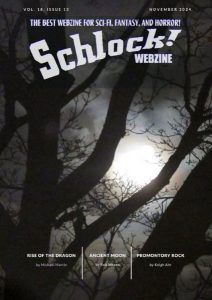
© Schlock! Webzine
As Steve Cashel:
- Steve Cashel, the penname I put on non-horrific, non-fantastical and often crime-tinged stories set in Scotland, had one piece published in 2024. In fact, it appeared only yesterday, on December 31st, the final day of the year. It’s called Malkied and appears on the short-fiction page of the website for the crime-and-mystery publisher Close to the Bone. It’s accessible here.
And finally…
- This is cheating. Self-publishing doesn’t count. But on September 18th, 2024 – the tenth anniversary of Scotland’s referendum on independence – I took the opportunity to post on this blog a short story entitled Mither, which I’d written in 2014 soon after I’d heard the referendum’s result. A mixture of Scottish politics and Alfred Hitchcock’s Psycho (1960), it was too weird to ever get properly published. (Still, even if I say so myself, I think Norman Bates and his mom are a good metaphor for Scotland and the divisions between ‘yes’ and ‘no’ voters that supposedly materialised at the time.) Anyway, if you’re interested, you can read it here.
So, I had 17 short stories published in 2024, which makes it my most successful year as a writer ever. I suspect I will be hard-pressed to equal or better that record in 2025, however. That’s because of the recent disappearances of certain magazines (like The Sirens Call) and publishers (like Midnight Street Press) who have published my stuff regularly in the past.
Meanwhile, 2025 looks like it’s going to be garbage, largely due to Donald Trump regaining the American presidency, which will embolden fascists, climate-change deniers, anti-vaxxers and conspiracy-fantasist nutjobs around the world. I suspect even somewhere as famously stable as Singapore will be affected, negatively, by the USA turning into a mafia state / an oligarchy / the political equivalent of a meth lab. And there’ll be extra, unwelcome input from Elon Musk… Oh well. My strategy for surviving 2025 with my sanity intact will be to keep my head down and keep writing.

© The Sirens Call Publications



